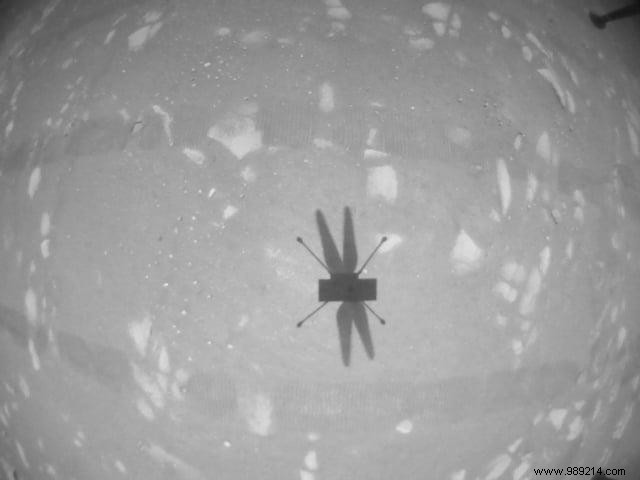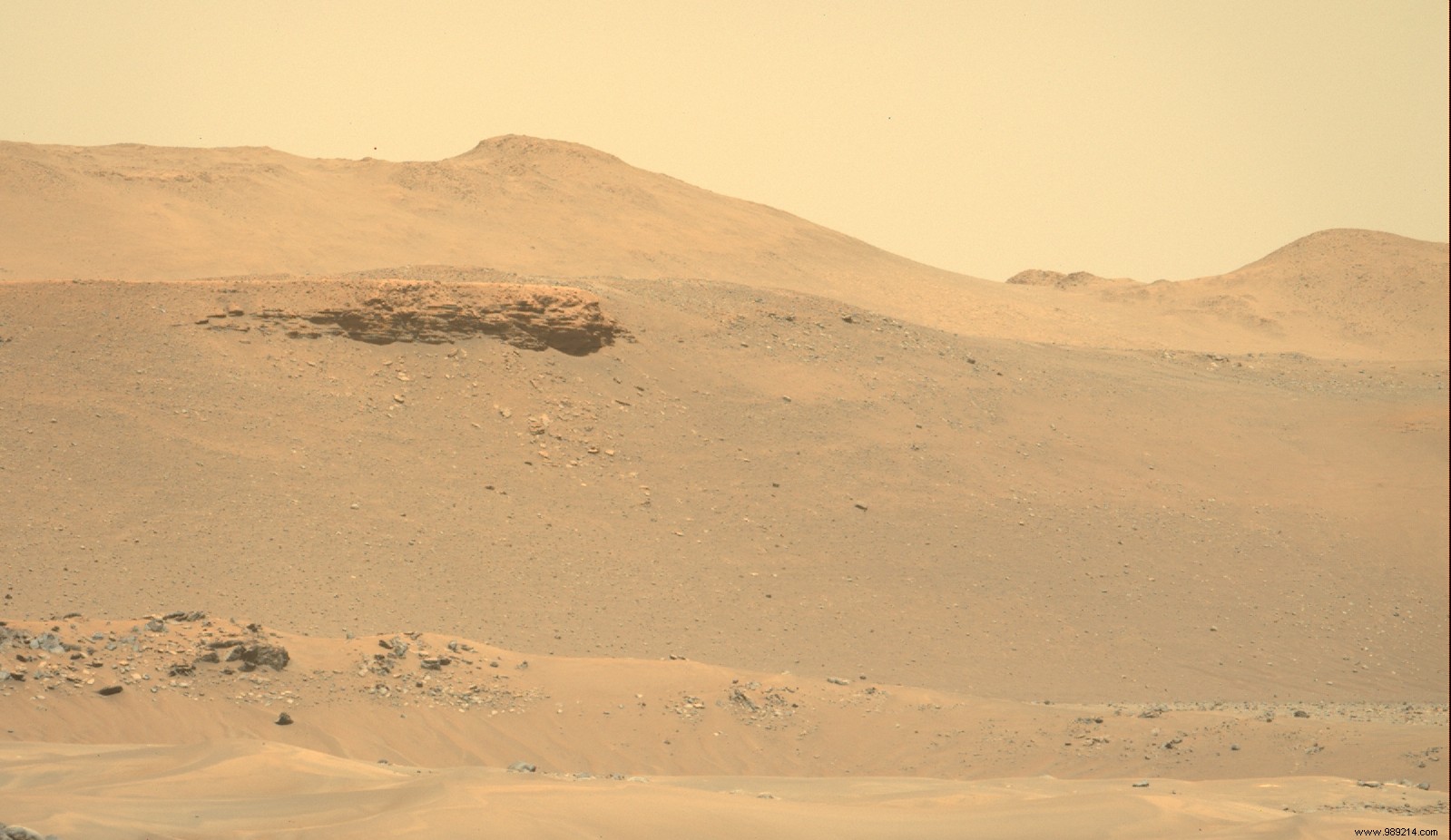A few days ago, Ingenuity made aerospace history by hovering over Jezero Crater. We now know that it is possible to fly on Mars. Enough to free up new mission options in the future. And NASA is already thinking about it.
You haven't missed it. On April 19, NASA achieved the feat of flying its small Ingenuity helicopter on Mars. During this first flight, the rotorcraft rose to just over three meters for 39.1 seconds before landing successfully, according to altimeter data.
The Ingenuity teams then successfully completed a second test flight of their small helicopter on April 22. During this manoeuvre, the rotorcraft rose approximately five meters from the ground , before moving laterally for a few meters. Then a third flight a few days ago, during which Ingenuity moved about fifty meters.
The mission team hopes to make two more flights over the next few days. "We really want to know what his limits are, so we will push them deliberately “, Ingenuity project manager MiMi Aung of JPL said at Monday’s press conference.
Then Perseverance will be able to begin its first scientific work.

Ingenuity is a pioneer. Its motorized flight will indeed pave the way for larger and more complex machines. Moreover, the members of the mission team are already thinking about what these future Martian helicopters could look like.
Bob Balaram, Chief Engineer of Ingenuity, NASA's Jet Propulsion Laboratory, is already imagining 'very reasonable sized vehicles can "weigh 25 to 30 kilograms ". The first design works have already started. “We are working on what it would take to deploy them and make them work “, assures the researcher.
And if Ingenuity does not carry any scientific instruments (demonstration mission), its successors will not leave empty-handed. For Bob Balaram, the biggest helicopters that he and his team will imagine will probably be able to carry up to 4.5 kg of research equipment . On the other hand, on the technical level, the researchers will not be able to go "further" for the moment.
Once deployed, these new vehicles will be a real "plus" for future missions. They will be able to accompany future Martian explorers by allowing the transport or recovery of small payloads. They could also be used to identify traversal routes and help estimate the potential of several otherwise inaccessible exploration areas such as steep cliffs.

That future is still pretty hazy. In reality, NASA has yet to approve any additional helicopter missions to Mars. On the other hand, the agency is currently developing a similar mission on Titan, the giant moon of Saturn.
For this mission called Dragonfly, a drone with a wingspan of three meters will be in charge of exploring the atmosphere of Titan. This being four times denser than that of the Earth and the gravity there being seven times weaker , each "jump" of this quadcopter could allow it to travel about fifteen kilometers. Several instruments will then be responsible for analyzing the different organic elements of the moon.
The rotorcraft should launch in 2027 and land on the moon in 2035 .